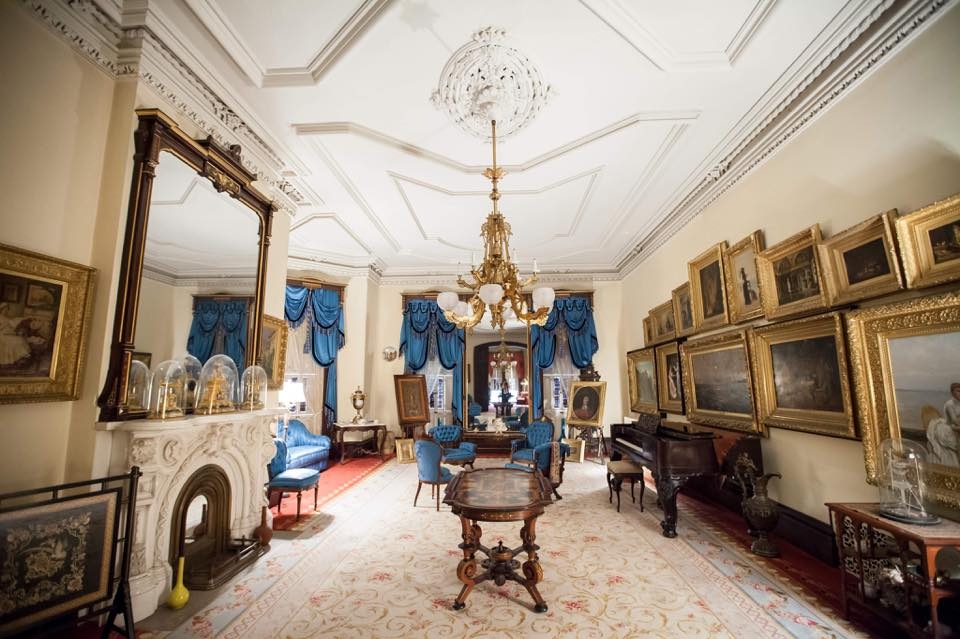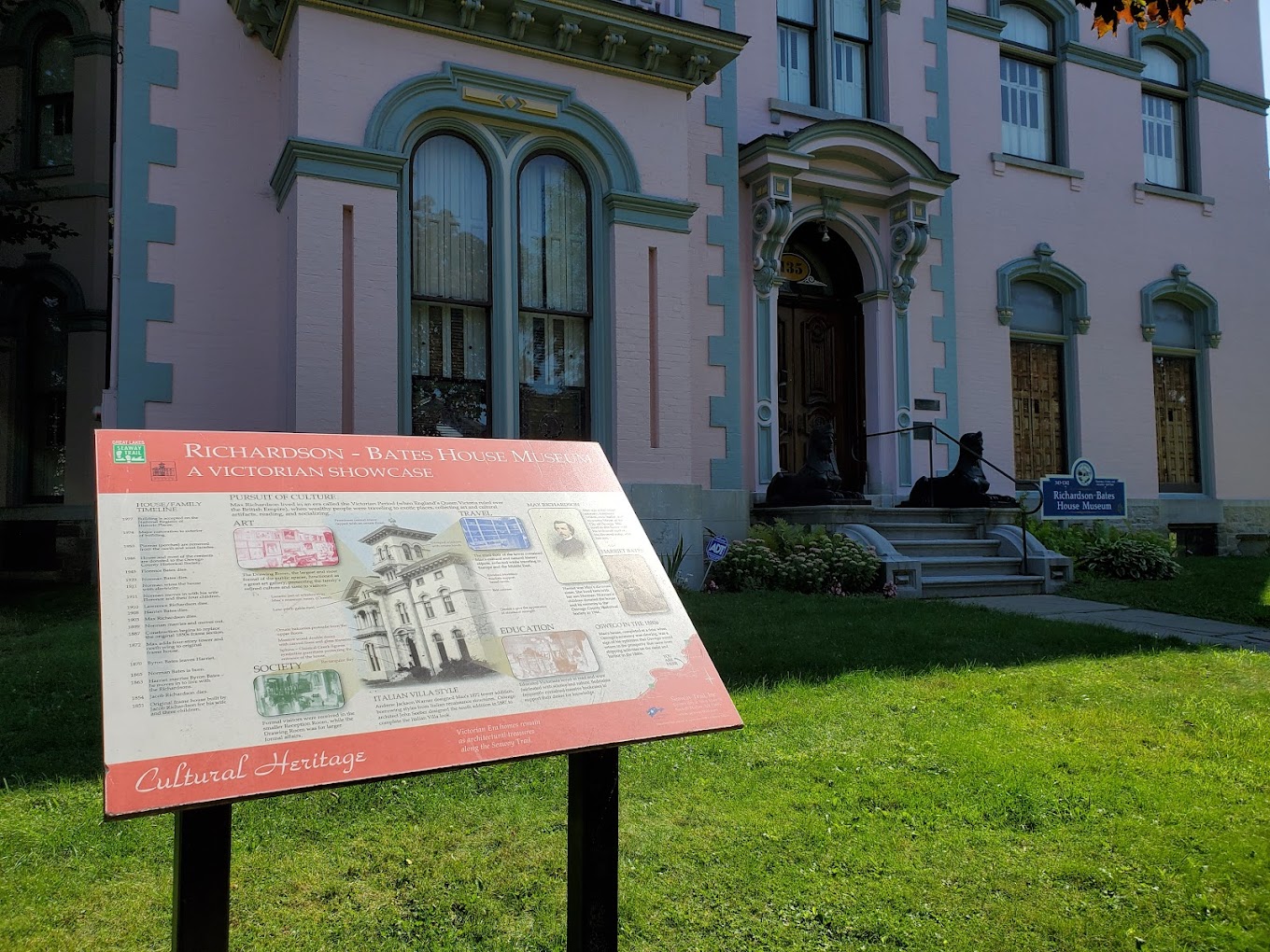
Situated in Oswego’s historic east side, the Richardson-Bates House Museum invites you to step foot into an authentic, Victorian-era mansion.
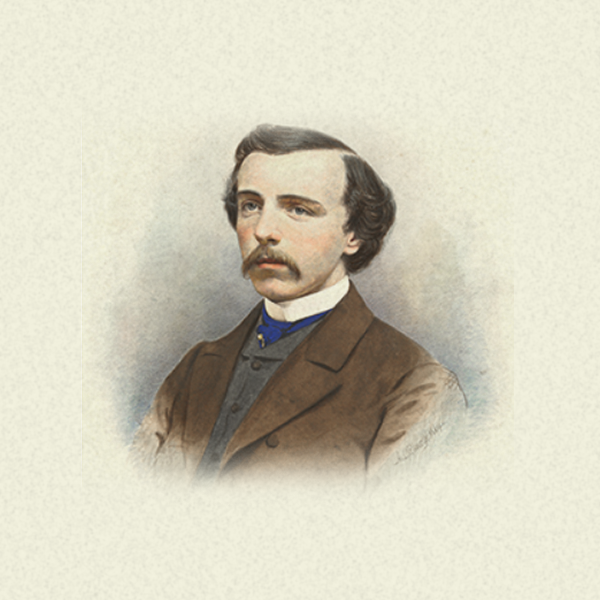
The Richardson-Bates House was built in two stages as a private residence for Maxwell B. Richardson, a local attorney, real estate broker and two-term mayor of Oswego, NY.
A lifelong bachelor, Max lived in the house with his widowed mother Naomi Richardson, his divorced sister Harriet Richardson Bates and her son Norman.
Max commissioned Rochester architect Andrew Jackson Warner to design an opulent Italianate villa for him and his family. The first stage of the house was built in 1867-72 as an addition to the original wooden homestead on the property.

That original homestead would later be torn down in 1887, and the second stage of the house, designed by Oswego architect John Seeber — the south wing — would be completed by 1889. The prestigious New York City firm of Pottier & Stymus was chosen to design and build the Renaissance Revival and Egyptian Revival furniture and décor.
The south wing was originally constructed with a porch on the front façade, matching a similar porch on the north side of the house. Both porches were at some point removed; the evidence of their existence remains by looking today at the difference in stonework cladding along the foundation.

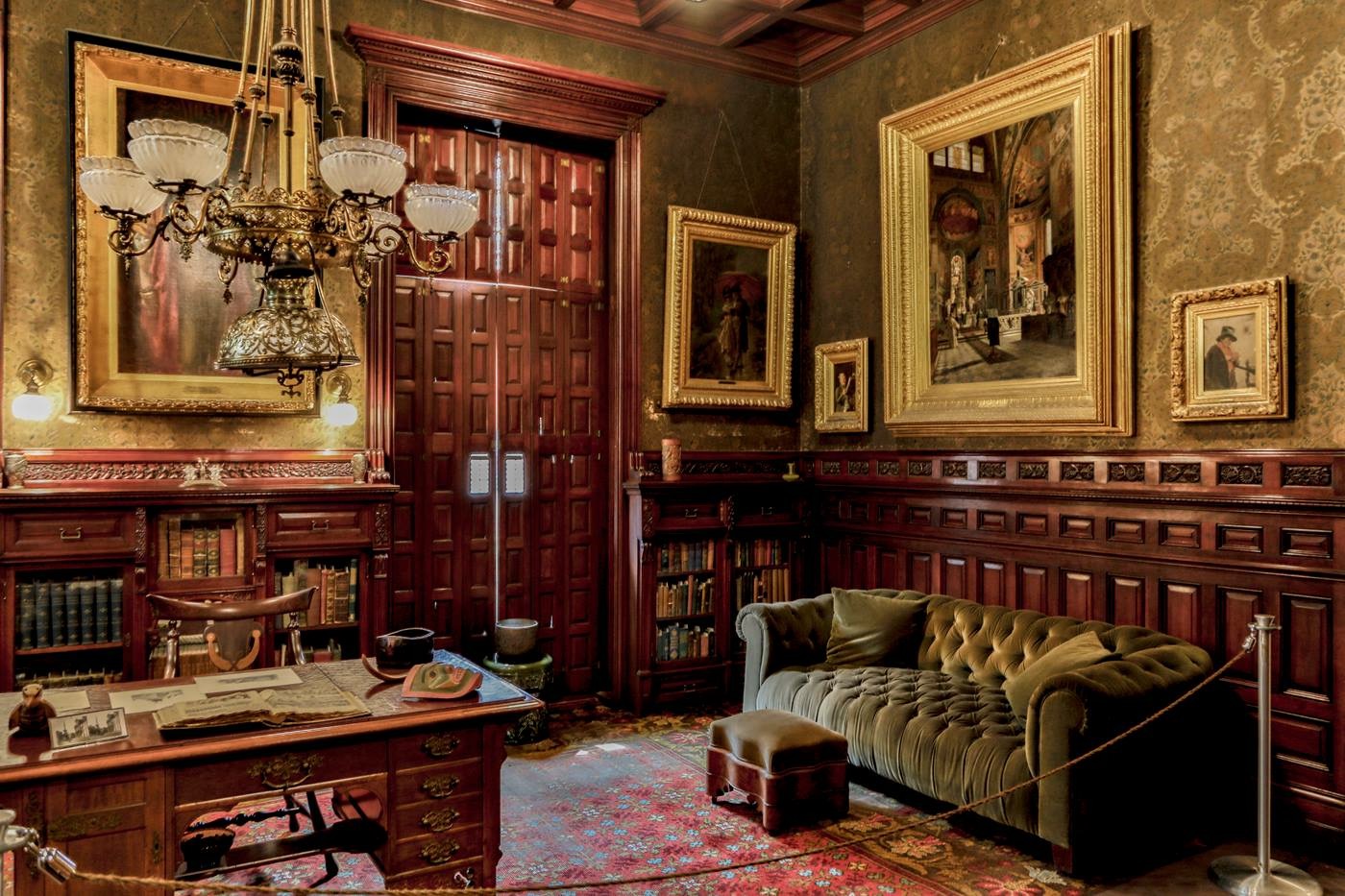
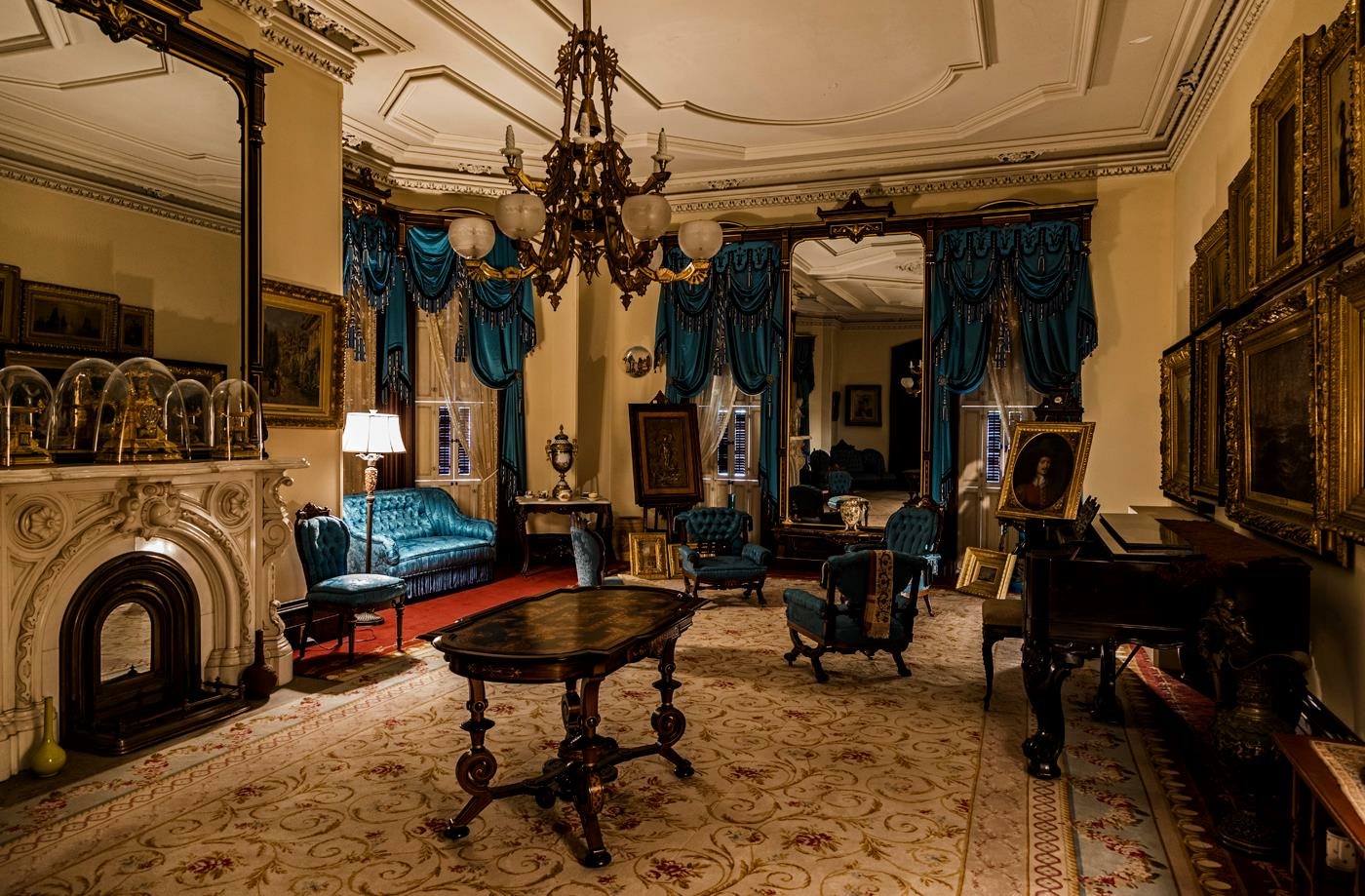
The opulent interiors of the Richardson-Bates House reflect the art and culture of the 19th century Victorian elite. About 90% of the family’s original furnishings were included when the house was gifted to the Society in 1946. Plan your visit and take a tour of the museum’s period rooms!
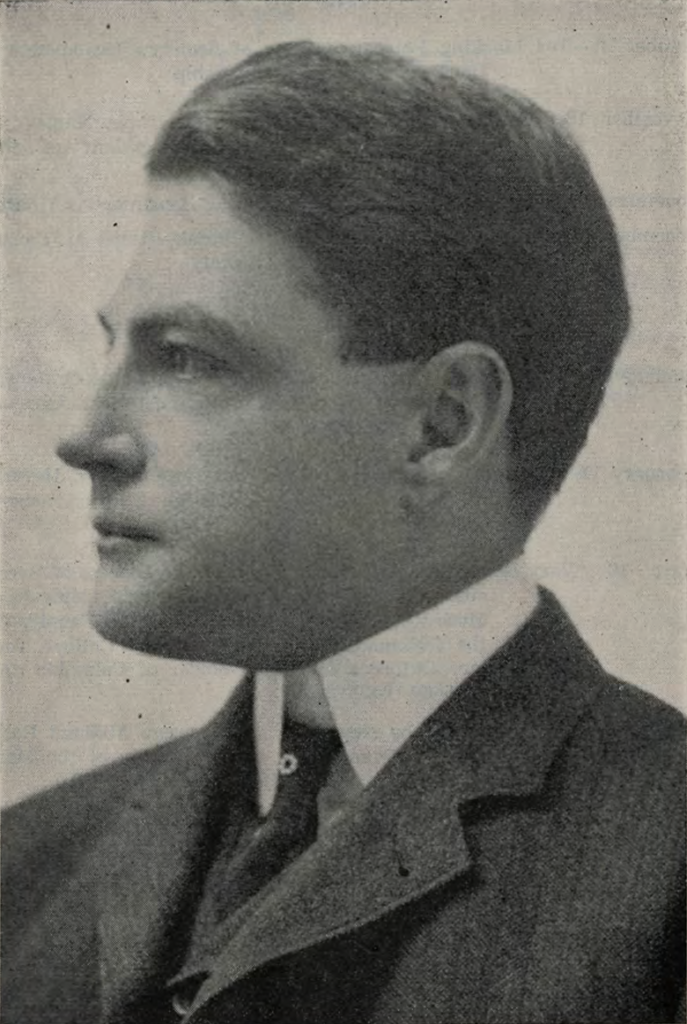
Harriet’s son, Norman Bates (no, not that one…), was the sole heir to the Richardson family and inherited the house in 1910. He lived in the house with his wife, Florence, and their four children: Betty, Norman Jr., Sally and Maxwell, along with at least two live-in servants.
The Richardson and Bates families were active members of the Oswego County Historical Society. Maxwell joined the Society in its first year, 1896; Norman was Secretary of the Historical Society until his death in 1923; and Florence, shortly after her husband’s death, was one of the first women allowed into the Society.
Norman had quite the storied history of his own. His pursuits outside of the house included joining uncle Max’s real estate and insurance businesses, directing Oswego’s Chamber of Commerce, and serving as president of the Oswego Country Club. He also pursued an interest in photography, being an early user of consumer camera equipment. He took numerous views of the completed house in 1889 which you can see at the museum today!
Florence was a significant benefactor to the city’s charities, and in 1944 helped Ruth Gruber organize an Open House at the newly created Emergency Refugee Shelter at Fort Ontario where 982 European refugees of the Holocaust had arrived in August to take up temporary residency for the duration of the war. The open house was instrumental in dispelling rumors that the refugees lived in luxury while Oswego suffered with wartime rationing and scarcities.
Following Florence’s death in 1945, the three surviving children donated the house, along with much of its remaining furnishings and most of Norman and Max’s military and ethnographic collections, to the Historical Society, intending it to serve as a public museum in memory of their family and to be the Society’s headquarters.
Learn More
Period Rooms
The opulent interiors of the Richardson-Bates House reflect the art and culture of the 19th century Victorian elite. 90% of the family’s original furnishings were included when the house was gifted to the Society in 1946.
Visit the Museum
Step foot into an authentic Victorian-era mansion. The Richardson-Bates House Museum is open from April through December for guided tours and events.


